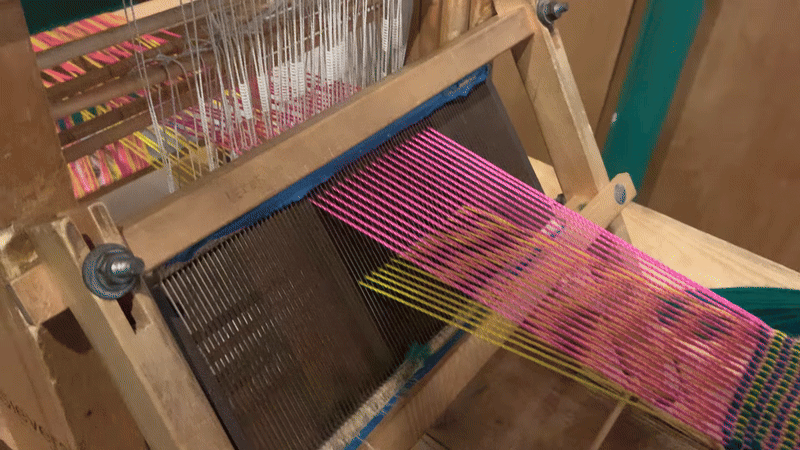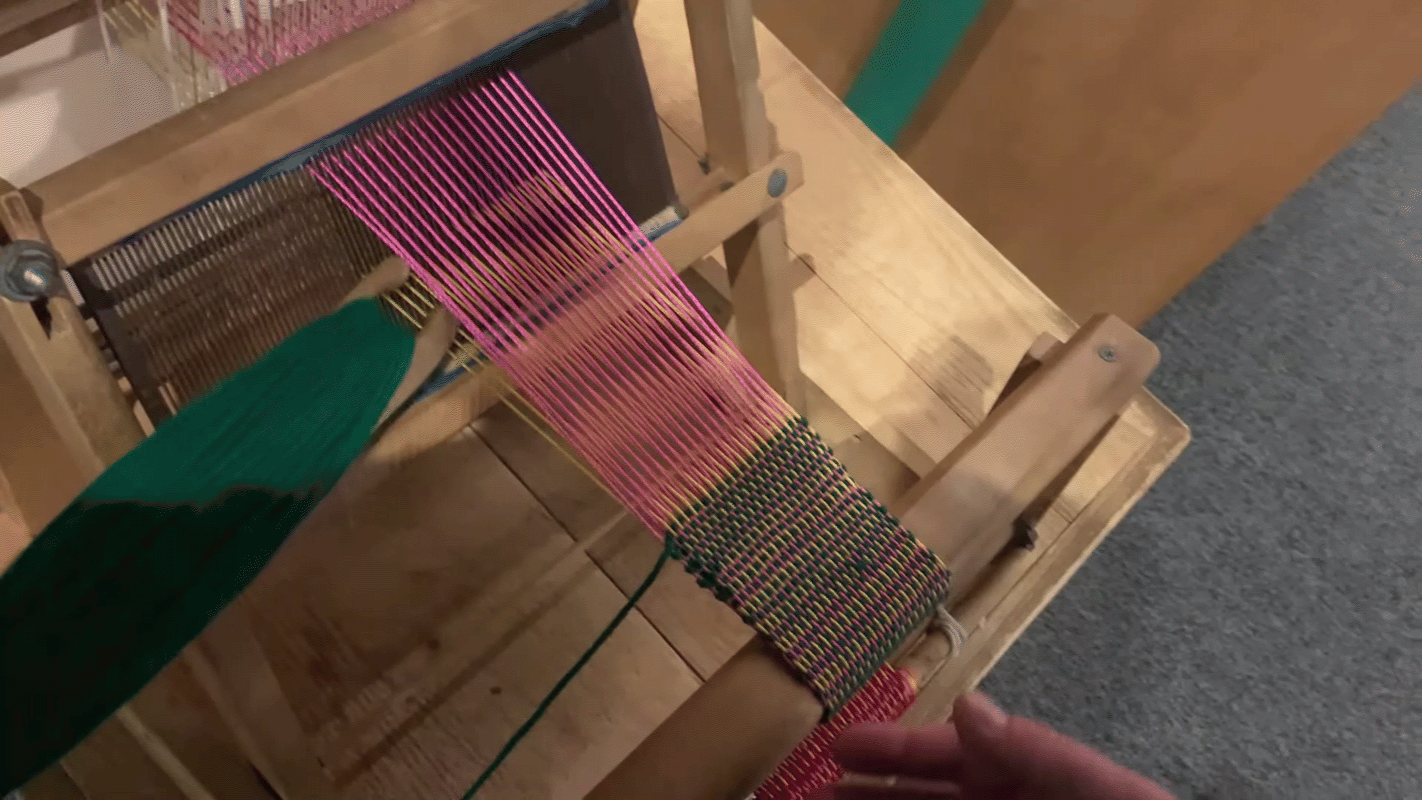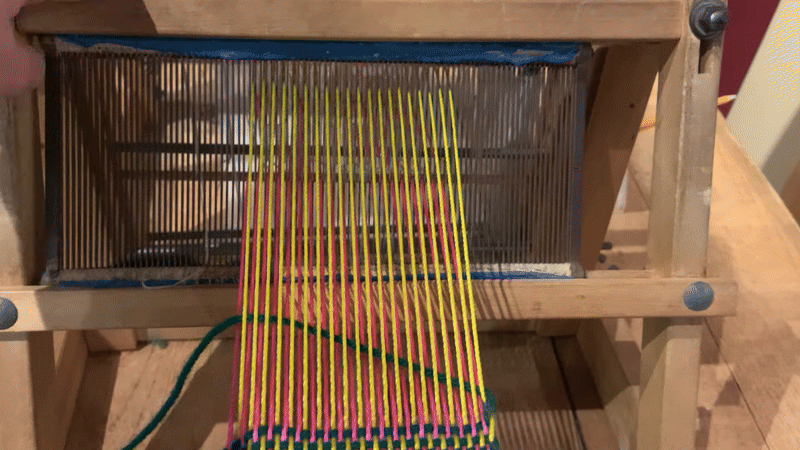Last updated: August 15, 2025
Article
How Does Weaving Work?
A machine that weaves cloth is called a loom. Whether on a power loom or a simple handloom, the process of how cloth is woven has stayed very similar over the years.
On a loom there are two different types of thread: warp and weft. Warp threads are the vertical threads running through the machine. Weft threads are woven across through the warp threads.
There are three main steps to weaving on a loom. These are called primary motions.
Primary Motions

The first primary motion is shedding. Shedding opens up a path in the warp threads. In a plain weave, half of the warp threads are lifted. This opens a gap called a shed.

The second primary motion is picking. The weft thread is passed through the shed under the lifted warp.

The third primary motion is beating in, also called beat up. During this step, the weft is pushed into place against the finished cloth with a beater bar.
Secondary Motions
At the same time as the primary motions, two secondary motions are also happening on the loom. These are the take up and the let off
As cloth is woven, the finished fabric is rolled in the front of the loom in a motion known as take up. At the same time, warp threads are released from the back of the loom in a motion known as let off. These two motions work together to give room for the weaving process to occur. Maintaining a consistent tension on the warp and the woven fabric is important to make smooth, even cloth without defects.
